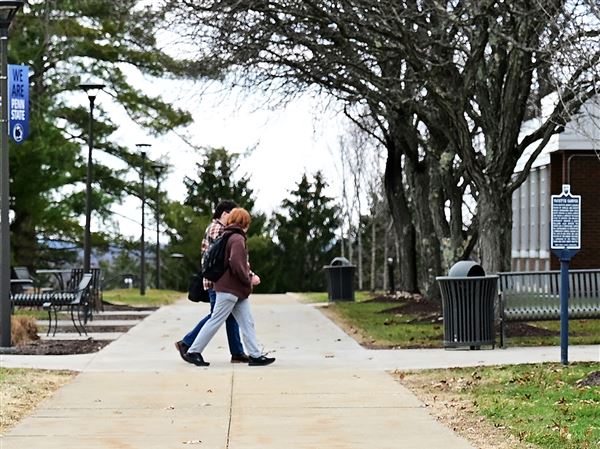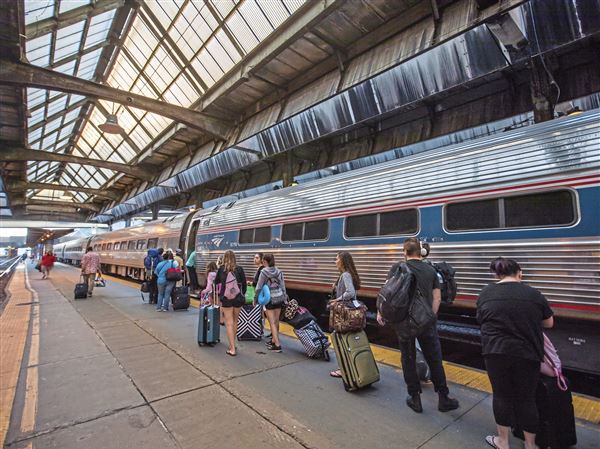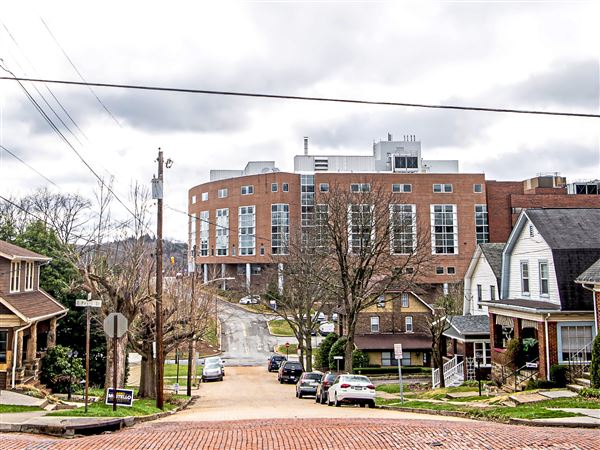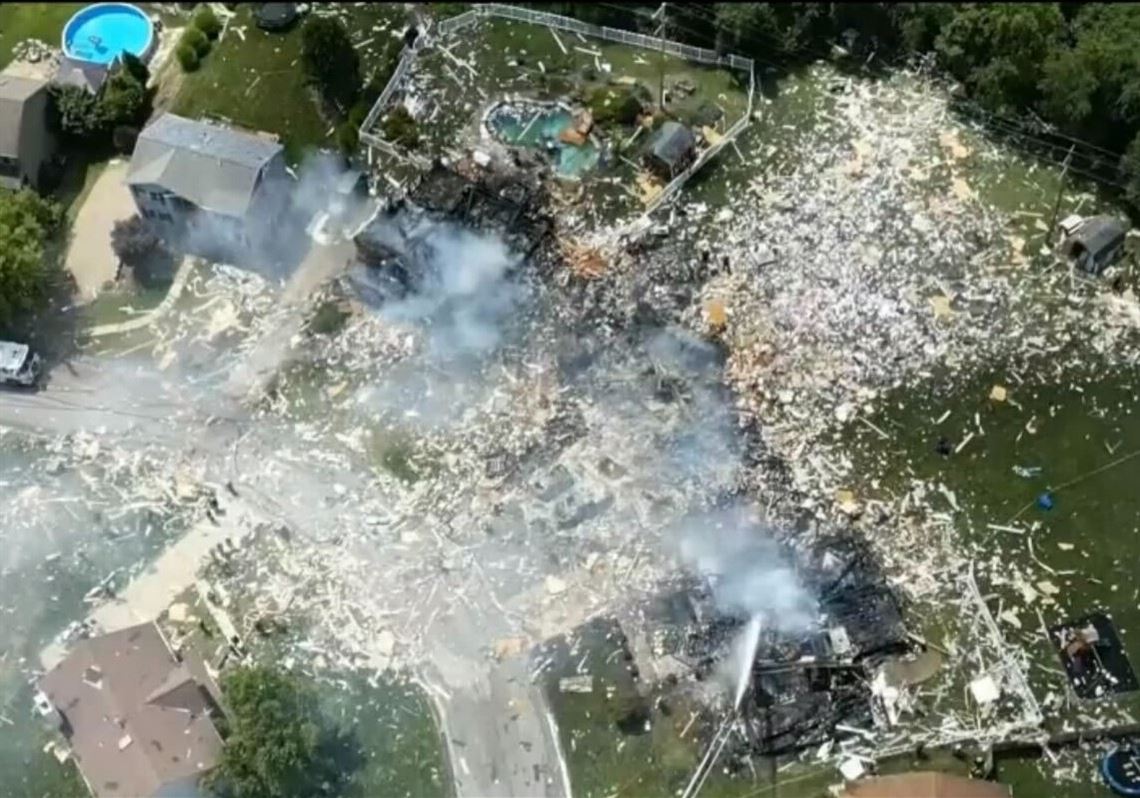The Dwarves tell no tale; but even as mithril was the foundation of their wealth, so also it was their destruction: they delved too greedily and too deep, and disturbed that from which they fled, Durin’s Bane.
These are words given to the wizard Gandalf by J.R.R. Tolkien in “The Lord of the Rings” about the Balrog, a monster of darkness and fire that is one of the evilest creatures in all of Middle Earth. The idea of the Balrog came to mind this week as I researched the corner of this earth called Plum Borough, under which a coal mine fire has been smoldering for decades.
Whether that subterranean blaze had anything to do with last Saturday’s horrific house explosion, which killed six people and leveled three homes, is yet to be determined. But it, along with Tolkien’s monster, represents an unavoidable and unsettling reality: The resources, and the methods of extracting them, that have made the modern world possible also have the power to destroy us, as they have seared the Plum community.
And we’re never quite as in-control as we’d like to believe.
Burning paradise
Lahaina, Hawaii, was Edenic. And yet much of what made it so contributed to its destruction.
There would have been no Lahaina — as a resort town and not just a geographic location — without the technology to bring people to it. But the people who came brought the invasive grasses that became the tinder for the inferno. And the planes that brought the people contributed, it seems, to the warmer weather that dried out the grasses.
And the spark that started the fire came from a downed power line. The town was betrayed by its own lifeline. The very thing that made it possible for people to enjoy this paradise destroyed it.
The desolation of Lahaina, with a staggering 1,000 people still missing, may go down as one of the deadliest disasters in American history. And so now there will be talk of blame and of prevention. We can learn how to mitigate the risks of similar events, and how to respond to them more effectively when they happen.
But we cannot learn how to make sure such tragedies never happen again. Because the powers we have awoken, which have made our world possible, are beyond our full understanding and control. Because there is a cost of living as we do — richer, longer, more comfortable, more free — which is the ever-present threat that those forces will erupt into our world.
Foundation of fire
That’s what Saturday’s explosion in Plum most resembled: an eruption. Eyewitnesses described the scene as “like a warzone.” But a bomb is dropped from above, and here the destruction came from below. It was as if some malevolent force within the earth itself, against which we are utterly helpless, had suddenly burst into a suburban neighborhood.
And, in a sense, that is what happened. While the details won’t be known for months or years, it’s clear enough that a combustible gas that once rested underground filled the house and ignited, tearing it to pieces. Peoples Gas insists its systems detected nothing unusual, leaving some to speculate that the gas might’ve seeped directly out of the despoiled earth.
No matter how the gas got there, it’s a terrifying thought that our homes and lives are so precarious that an invisible menace can devastate them so suddenly and completely. And it’s a menace that we intentionally brought to the surface; that we pump into our houses and offices and schools; that we have made essential to regional and national and even global prosperity.
That’s the paradox of Plum, and of the entire modern world. Without extracting fossil fuels from the deep places of the earth, there would be no Plum, or Pittsburgh for that matter, at least as we know it. We have built our civilization on the foundation of combustion. Around here, that’s not just figurative: Most of the region is undermined, and under Plum the massive Renton Mine is still on fire.
There’s hardly a more potent metaphor for the precariousness of modernity than a suburban plan built on a mine fire. There’s hardly a more terrifying tragedy than the power of the deep erupting into our seemingly stable and sterile world.
Living with the monster
There’s a trend in environmental discourse to describe extraction and combustion of fossil fuels as a kind of original sin, and our continued dependence on them as proof of our depravity. On this understanding, tragedies like Lahaina and Plum prove that none of this was worth it. It would have been better if western Maui had been left to nature and to the native Hawaiians. It would have been better if the coal seams under our feet had never been discovered, and western Pennsylvania remained a virgin forest.
This isn’t a recent idea, or an exclusively left-wing one: Tolkien, not a leftist, played with it, as well. The Balrog clearly represents the the danger of thinking the earth and everything in it belongs to us to use as we wish. And in a scene Peter Jackson did not include in his adaptation, the wicked Saruman industrializes the Shire — but the hobbits fight back and vow to restore their home: tear down the factories, replant the forests.
While I’m more Tolkien and less Greta Thunberg, I do find these ideas beguiling. Simplicity, harmony, community: Yes, lives under pre-industrial conditions were shorter and more brutal, but might they have been better?
I don’t know. I’m unwilling to condemn technology that has allowed billions of people to live, and to live well, who otherwise would not have. But the Greeks were right about hubris: When humans forget our limits, there’s always hell to pay.
As for me, I’m not about to turn off the gas that heats my water and my home, and I’m not about to move my family off the map and the grid. The Balrog has been awoken, whether we like it or not, and there’s no sending him back to his lair.
Brandon McGinley is the deputy editorial page editor for the Pittsburgh Post-Gazette: bmcginley@post-gazette.com.
First Published: August 18, 2023, 4:50 p.m.
Updated: August 20, 2023, 3:43 a.m.

















